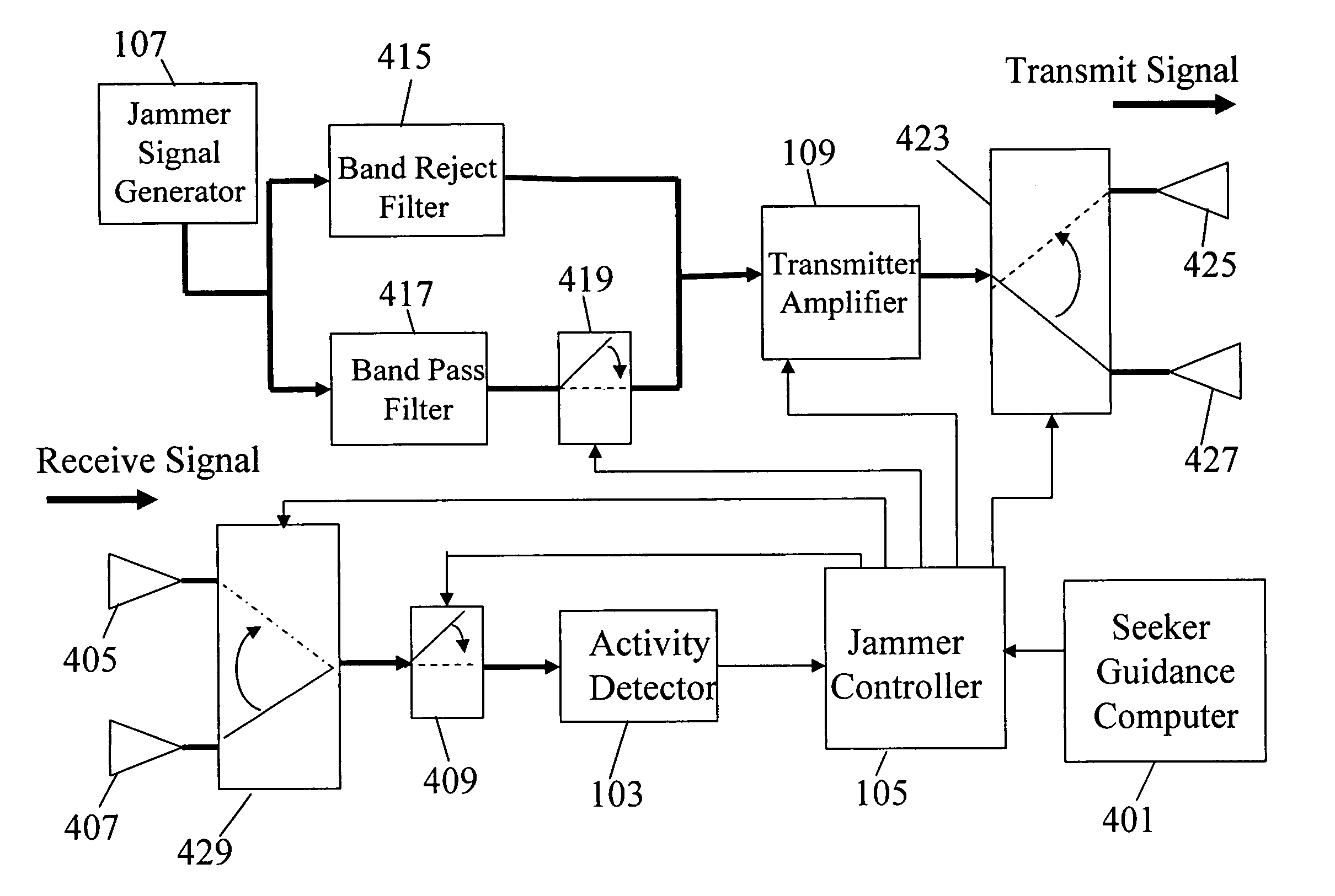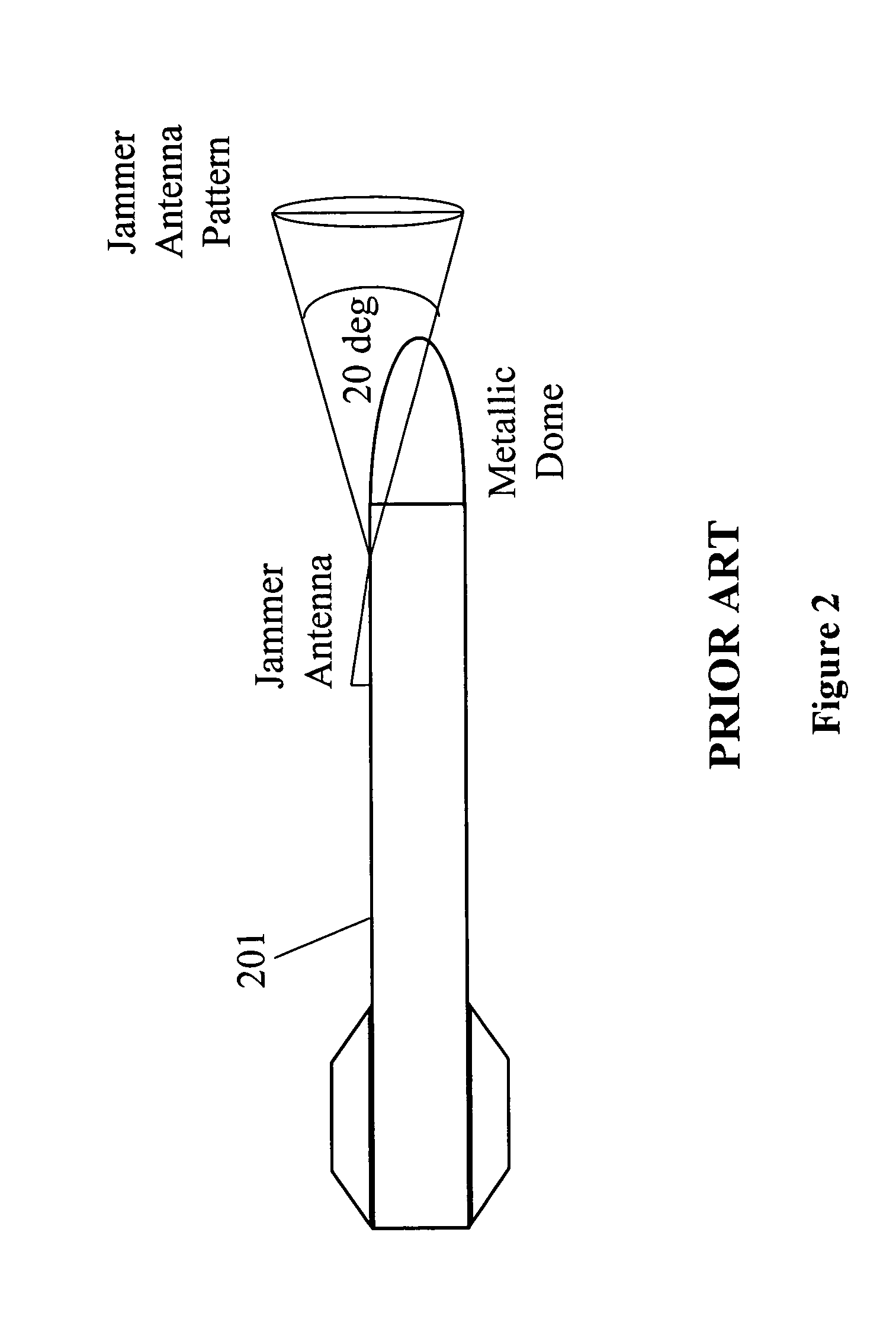Multiple-antenna jamming system
a jamming system and multi-antenna technology, applied in direction controllers, instruments, using reradiation, etc., can solve the problems of enemy radar being incapable of accurately tracking the missile, initiating the destruction of the missile, and presenting a potential threat to the effective lethality of anti-armor missiles, etc., to achieve the effect of maximizing the effectiveness of the jamming system
- Summary
- Abstract
- Description
- Claims
- Application Information
AI Technical Summary
Benefits of technology
Problems solved by technology
Method used
Image
Examples
Embodiment Construction
[0015]Referring now to the drawing wherein like numbers represent like parts in each of the several figures and dark arrows indicate RF signal travel while light arrows indicate electronic command signals, the structure and function of the multiple-antenna jamming system (MAJS) are explained in detail. The MAJS system resides in a frequency seeker missile 201 and is located typically between the warhead and seeker portions of the missile. The MAJS utilizes seeker guidance computer 401 that already is a part of the seeker.
[0016]During the missile's flight toward the selected target, the guidance computer controls the pattern of the seeker pulses emitted toward the target, setting the frequency band of the emitted pulses and determining the duration of the listening period between two consecutive emitted pulses, and also generates information relative to the missile's line-of-sight to the target. Any active protection system (APS) that protects the target also emits pulses to detect a...
PUM
 Login to View More
Login to View More Abstract
Description
Claims
Application Information
 Login to View More
Login to View More - R&D
- Intellectual Property
- Life Sciences
- Materials
- Tech Scout
- Unparalleled Data Quality
- Higher Quality Content
- 60% Fewer Hallucinations
Browse by: Latest US Patents, China's latest patents, Technical Efficacy Thesaurus, Application Domain, Technology Topic, Popular Technical Reports.
© 2025 PatSnap. All rights reserved.Legal|Privacy policy|Modern Slavery Act Transparency Statement|Sitemap|About US| Contact US: help@patsnap.com



